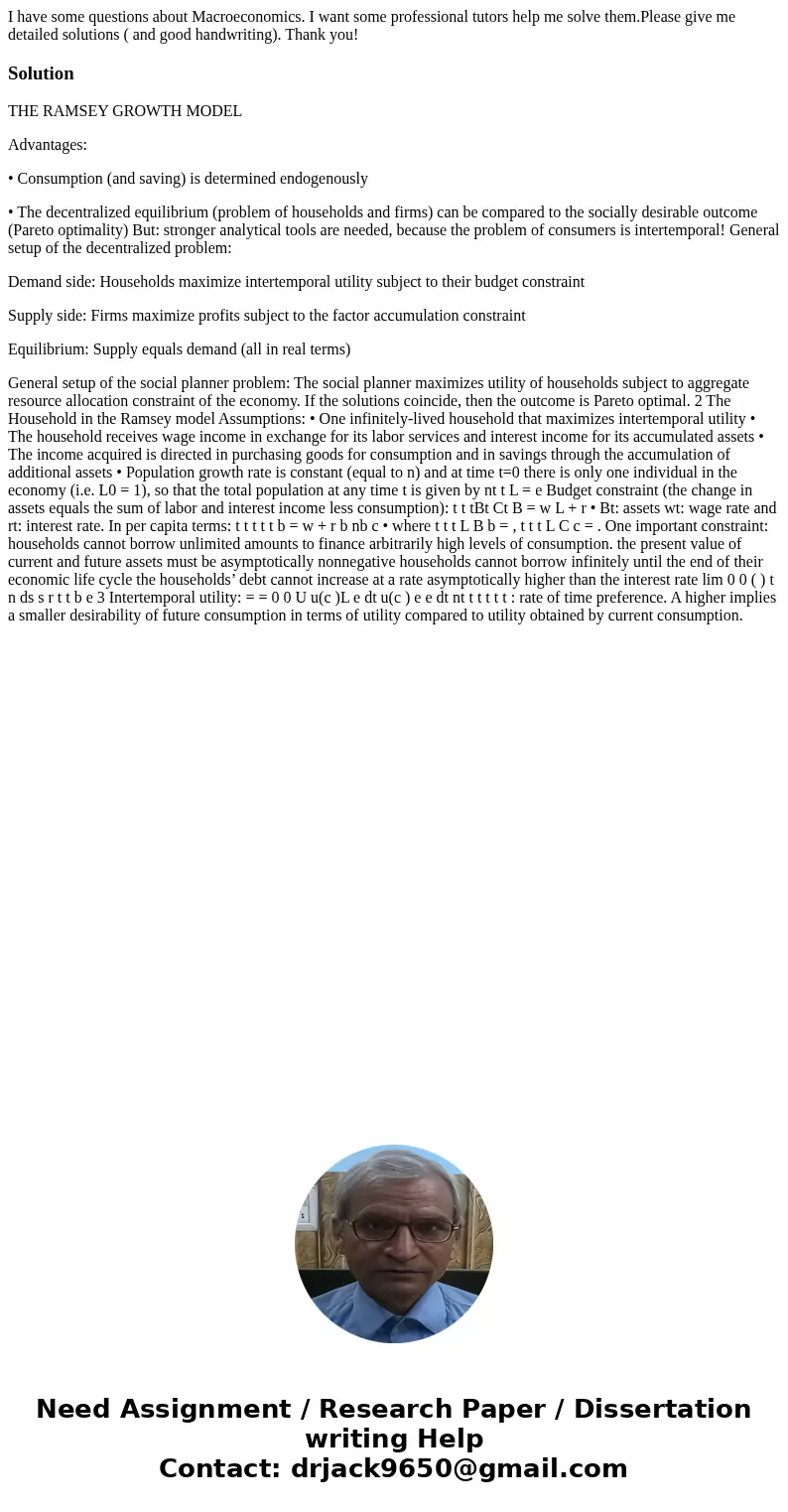I have some questions about Macroeconomics I want some profe
I have some questions about Macroeconomics. I want some professional tutors help me solve them.Please give me detailed solutions ( and good handwriting). Thank you!
Solution
THE RAMSEY GROWTH MODEL
Advantages:
• Consumption (and saving) is determined endogenously
• The decentralized equilibrium (problem of households and firms) can be compared to the socially desirable outcome (Pareto optimality) But: stronger analytical tools are needed, because the problem of consumers is intertemporal! General setup of the decentralized problem:
Demand side: Households maximize intertemporal utility subject to their budget constraint
Supply side: Firms maximize profits subject to the factor accumulation constraint
Equilibrium: Supply equals demand (all in real terms)
General setup of the social planner problem: The social planner maximizes utility of households subject to aggregate resource allocation constraint of the economy. If the solutions coincide, then the outcome is Pareto optimal. 2 The Household in the Ramsey model Assumptions: • One infinitely-lived household that maximizes intertemporal utility • The household receives wage income in exchange for its labor services and interest income for its accumulated assets • The income acquired is directed in purchasing goods for consumption and in savings through the accumulation of additional assets • Population growth rate is constant (equal to n) and at time t=0 there is only one individual in the economy (i.e. L0 = 1), so that the total population at any time t is given by nt t L = e Budget constraint (the change in assets equals the sum of labor and interest income less consumption): t t tBt Ct B = w L + r • Bt: assets wt: wage rate and rt: interest rate. In per capita terms: t t t t t b = w + r b nb c • where t t t L B b = , t t t L C c = . One important constraint: households cannot borrow unlimited amounts to finance arbitrarily high levels of consumption. the present value of current and future assets must be asymptotically nonnegative households cannot borrow infinitely until the end of their economic life cycle the households’ debt cannot increase at a rate asymptotically higher than the interest rate lim 0 0 ( ) t n ds s r t t b e 3 Intertemporal utility: = = 0 0 U u(c )L e dt u(c ) e e dt nt t t t t t : rate of time preference. A higher implies a smaller desirability of future consumption in terms of utility compared to utility obtained by current consumption.

 Homework Sourse
Homework Sourse